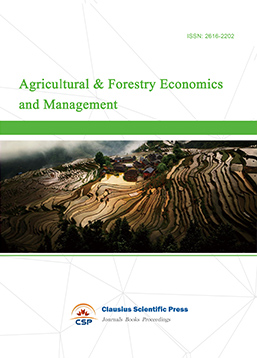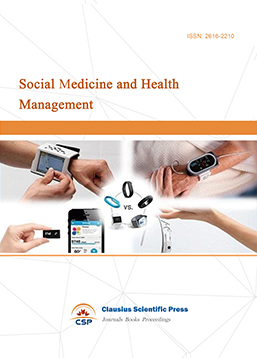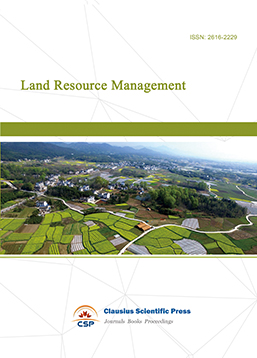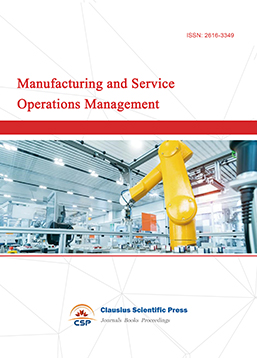Supplier Selection towards Baijiu Supply Chain Sustainability from a Chinese Perspective
DOI: 10.23977/ieim.2019.21006 | Downloads: 14 | Views: 2930
Author(s)
Xianglan Jiang 1,2, Yao Yang 3, Yuanchun Yu 1
Affiliation(s)
1 Management School, Sichuan University of Science & Engineering, Zigong 643000, China
2 School of Management and Economics, University of Electronic Science and Technology of China, Chengdu 611731, China
3 Business school, Sichuan University, Chengdu 610064, China
Corresponding Author
Xianglan JiangABSTRACT
Because of the global concern with environmental protection and social responsibility, there has been an increased research focus on sustainable supplier selection. Baijiu is the most popular Chinese alcoholic beverage, the production and consumption of which has a significant impact on the economy, the environment, and the society. Due to increased Chinese economic growth, there has been significant pressure to ensure supplier selection sustainability across the Baijiu supply chain. However, to date, there has little research on the integration of the economic, environmental, and social dimensions in supplier selection research. To go some way to filling this gap, this paper evaluates Baijiu supply chain supplier sustainability by first developing a sustainable supplier criteria system that integrates the economic, environmental, and social dimensions after which an improved fuzzy DEMATEL (Decision Making Trial and Evaluation Laboratory) method is proposed to analyse the criteria relationships. Finally, the framework is applied to a case study at a large Baijiu enterprise in China, from which it was found that the method was feasible and effective. This paper develops an effective systematic approach that decision-makers can use to select sustainable suppliers for Baijiu enterprises.
KEYWORDS
Baijiu (Chinese liquor), Supplier selection, Sustainable supply chainCITE THIS PAPER
Xianglan Jiang, Yao Yang, Yuanchun Yu, Supplier Selection towards Baijiu Supply Chain Sustainability from a Chinese Perspective. Industrial Engineering and Innovation Management (2019) 2: 33-51. DOI: http://dx.doi.org/10.23977/ieim.2019.21006.
REFERENCES
[1] Wang HY, Gao YB, Fan QW, Xu Y. Characterization and comparison of microbial community of di erent typical Chinese liquor Daqus by PCRCDGGE. Letters in Applied Microbiology, 2011, 53(2): 134-140.
[2] Zheng XW, Yan Z, Han BZ, Zwietering MH, Samson RA, Boekhout T, Nout, MR. Complex microbiota of a Chinese “Fen” liquor fermentation starter (Fen-Daqu), revealed by culture-dependent and culture-independent methods. Food Microbiology, 2012, 31(2): 293-300.
[3] Liu MK, Tang YM, Guo XJ, et al. Deep sequencing reveals high bacterial diversity and phylo-genetic novelty in pit mud from Luzhou Laojiao cellars for Chinese strong- avor Baijiu. Food Research International, 2017, 102: 68-76.
[4] Shi JH, Xiao YP, Li XR, Ma EB, Du XW, Quan ZX. Analyses of microbial consortia in the starter of Fen liquor. Letters in applied microbiology, 2009, 48(4): 478-485.
[5] Han Y, Huang B, Liu S, Zou N, Yang J, Zhong Z, et al. Residue levels of ve grain-storage-use insecticides during the production process of sorghum distilled spirits. Food chemistry, 2016, 12-17.
[6] Govindan K, Kadzinski M, Sivakumar R. Application of a novel PROMETHEE-based method for construction of a group compromise ranking to prioritization of green suppliers in food supply chain. Omega, 2017, 71: 129-145.
[7] Ye G, Luo H, Ren Z, et al. Evaluating the bioenergy potential of Chinese Liquor-industry waste through pyrolysis, thermogravimetric, kinetics and evolved gas analyses. Energy Conversion and Management, 2018, 163: 13-21.
[8] Zheng XW, Yan Z, Nout MJR, Boekhout T, Han BZ. Characterization of the microbial com-munity in di erent types of Daqu samples as revealed by 16S rRNA and 26S rRNA gene clone libraries. World Journal of Microbiology and Biotechnology, 2015, 31(1): 199-208.
[9] Zhao D, Shi D, Sun J, et al. Characterization of key aroma compounds in Gujinggong Chinese Baijiu by gas chromatographyColfactometry, quantitative measurements, and sensory evalua-tion. Food Research International, 2018, 105: 616-627.
[10] Lin RJ. Using fuzzy DEMATEL to evaluate the green supply chain management practices. Journal of Cleaner Production, 2013, 40: 32-39.
[11] Elkington J. Partnerships from cannibals with forks: The triple bottom line of 21st-century business. Environmental Quality Management, 1998, 8(1): 37-51.
[12] O’Rourke D. The science of sustainable supply chains. Science, 2014, 344(6188): 1124-1127.
[13] Igarashi M, de Boer L, Fet AM. What is required for greener supplier selection? A literature review and conceptual model development. Journal of Purchasing and Supply Management, 2013, 19(4): 247-263.
[14] Grimm JH, Hofstetter JS, Sarkis J. Critical factors for sub-supplier management: A sustainable food supply chains perspective. International Journal of Production Economics, 2014, 152: 159-173.
[15] Weber CA, Current JR, Benton WC. Vendor selection criteria and methods. European journal of operational research, 1991, 50(1): 2-18.
[16] Noci G. Designing ‘green’ vendor rating systems for the assessment of a supplier’s environmental performance. European Journal of Purchasing & Supply Management, 1997, 3(2): 103-114.
[17] Amindoust A, Ahmed S, Sagha nia A, Bahreininejad A. Sustainable supplier selection: A ranking model based on fuzzy inference system. Applied Soft Computing, 2012, 12(6): 1668-1677.
[18] Reefke H, Sundaram D. Sustainable supply chain management: Decision models for transformation and maturity. Decision Support Systems, 2018, 113: 56-72.
[19] Mota B, Gomes MI, Carvalho A, Barbosa-Povoa AP. Sustainable supply chains: An integrated modeling approach under uncertainty. Omega, 2018, 77: 32-57.
[20] Seuring S, Muller M. From a literature review to a conceptual framework for sustainable supply chain management. Journal of cleaner production, 2008, 16(15): 1699-1710.
[21] Orji IJ, Wei S. An innovative integration of fuzzy-logic and systems dynamics in sustainable supplier selection: A case on manufacturing industry. Computers & Industrial Engineering, 2015, 88: 1-12.
[22] Eskandarpour M, Dejax P, Miemczyk J, Peton O. Sustainable supply chain network design: an optimization-oriented review. Omega, 2015, 54: 11-32.
[23] Wetzstein A, Hartmann E, Benton Jr WC, Hohenstein NO. A systematic assessment of sup-plier selection literatureCstate-of-the-art and future scope. International Journal of Production Economics, 2016, 182: 304-323.
[24] Luthra S, Govindan K, Kharb RK, Mangla SK. Evaluating the enablers in solar power develop-ments in the current scenario using fuzzy DEMATEL: An Indian perspective. Renewable and Sustainable Energy Reviews, 2016, 63: 379-397.
[25] Rezaei J, Fahim PBM, Tavasszy L. Supplier selection in the airline retail industry using a funnel methodology: Conjunctive screening method and fuzzy AHP. Expert Systems with Applications, 2014, 41(18): 8165-8179.
[26] Azadi M, Jafarian M, Saen RF, Mirhedayatian, SM. A new fuzzy DEA model for evaluation of e ciency and e ectiveness of suppliers in sustainable supply chain management context. Computers & Operations Research, 2015, 54: 274-285.
[27] Chan FTS, Kumar N. Global supplier development considering risk factors using fuzzy extended AHP-based approach. Omega, 2007, 35(4): 417-431.
[28] Lin KP, Tseng ML, Pai PF. Sustainable supply chain management using approximate fuzzy DEMATEL method. Resources, Conservation and Recycling, 2018, 128: 134-142.
[29] Chang B, Chang CW, Wu CH. Fuzzy DEMATEL method for developing supplier selection criteria. Expert systems with Applications, 2011, 38(3): 1850-1858.
[30] Büyüközkan, G., & Çifçi, G. A novel hybrid MCDM approach based on fuzzy DEMATEL, fuzzy ANP and fuzzy TOPSIS to evaluate green suppliers. Expert Systems with Applications, 2012, 39(3): 3000-3011.
[31] BaykasogLu A, KaplanogLu V, DurmusOgLu ZD, SAhin C. Integrating fuzzy DEMATEL and fuzzy hierarchical TOPSIS methods for truck selection. Expert Systems with Applications, 2013, 40(3): 899-907.
[32] Xu J, Liu Q, Wang R. A class of multi-objective supply chain networks optimal model under random fuzzy environment and its application to the industry of Chinese liquor. Information Sciences, 2008, 178(8): 2022-2043.
[33] Seuring S. A review of modeling approaches for sustainable supply chain management. Decision support systems, 2013, 54(4): 1513-1520.
[34] Valluri A, Croson DC. Agent learning in supplier selection models. Decision Support Systems, 2005, 39(2): 219-240.
[35] Dickson GW. An analysis of vendor selection systems and decisions. Journal of purchasing, 1966, 2(1): 5-17.
[36] Mani V, Agrawal R, Sharma V. Supplier selection using social sustainability: AHP based approach in India. International Strategic Management Review, 2014, 2(2): 98-112.
[37] Goebel P, Reuter C, Pibernik R, Sichtmann C. The influence of ethical culture on supplier selection in the context of sustainable sourcing. International Journal of Production Economics, 2012, 140(1): 7-17.
[38] Kilincci O, Onal SA. Fuzzy AHP approach for supplier selection in a washing machine company. Expert systems with Applications, 2011, 38(8): 9656-9664.
[39] Rezaei J, Fahim PBM, Tavasszy L. Supplier selection in the airline retail industry using a funnel methodology: Conjunctive screening method and fuzzy AHP. Expert Systems with Applications, 2014, 41(18): 8165-8179.
[40] Van der Rhee B, Verma R, Plaschka G. Understanding trade-o s in the supplier selection process: The role of exibility, delivery, and value-added services/support. International Journal of Production Economics, 2009, 120(1): 30-41.
[41] Amid A, Ghodsypour SH, O’Brien C. A weighted maxCmin model for fuzzy multi-objective sup-plier selection in a supply chain. International Journal of Production Economics, 2011, 131(1): 139-145.
[42] Chen P S, Wu M T. A modi ed failure mode and e ects analysis method for supplier selec-tion problems in the supply chain risk environment: A case study. Computers & Industrial Engineering, 2013, 66(4): 634-642.
[43] Ho W, Xu X, Dey PK. Multi-criteria decision making approaches for supplier evaluation and selection: A literature review. European Journal of operational research, 2010, 202(1): 16-24.
[44] Gimenez C, Tachizawa EM. Extending sustainability to suppliers: a systematic literature review. Supply Chain Management: An International Journal, 2012, 17(5): 531-543.
[45] Govindan K, Rajendran S, Sarkis J, Murugesan P. Multi criteria decision making approaches for green supplier evaluation and selection: a literature review. Journal of Cleaner Production, 2015, 98: 66-83.
[46] Beddington JR, Asaduzzaman M, Clark ME, et al. What next for agriculture after Durban? Science; 2012, 335(6066): 289-290.
[47] Hoekstra AY, Wiedmann TO. Humanity’s unsustainable environmental footprint. Science; 2014, 344(6188): 1114-1117.
[48] Shaw K, Shankar R, Yadav SS, Thakur LS. Supplier selection using fuzzy AHP and fuzzy multi-objective linear programming for developing low carbon supply chain. Expert systems with applications; 2012, 39(9): 8182-8192.
[49] Hsu CW, Kuo TC, Chen SH, Hu AH. Using DEMATEL to develop a carbon management model of supplier selection in green supply chain management. Journal of cleaner production, 2013, 164-172.
[50] Yu F, Xue L, Sun C, Zhang C. Product transportation distance based supplier selection in sustainable supply chain network. Journal of cleaner production, 2016, 137: 29-39.
[51] Luthra S, Govindan K, Kannan D, Mangla SK, Garg CP. An integrated framework for sustain-able supplier selection and evaluation in supply chains. Journal of Cleaner Production, 2017, 1686-1698.
[52] Büyüközkan, G., & Çifçi, G. A novel fuzzy multi-criteria decision framework for sustainable supplier selection with incomplete information. Computers in Industry, 2011, 62(2): 164-174.
[53] Wang Z, Subramanian N, Gunasekaran A, Abdulrahman MD, Liu C. Composite sustainable manufacturing practice and performance framework: Chinese auto-parts suppliers perspective. International Journal of Production Economics, 2015, 170: 219-233.
[54] Ageron B, Gunasekaran A, Spalanzani A. Sustainable supply management: An empirical study. International journal of production economics, 2012, 140(1): 168-182.
[55] Sarkis J, Dhavale DG. Supplier selection for sustainable operations: A triple-bottom-line approach using a Bayesian framework. International Journal of Production Economics, 2015, 166: 177-191.
[56] Benjaafar S, Elahi E, Donohue KL. Outsourcing via service competition. Management Science, 2007, 53(2): 241-259.
[57] Shabanpour H, Youse S, Saen RF. Future planning for benchmarking and ranking sustainable suppliers using goal programming and robust double frontiers DEA. Transportation Research Part D: Transport and Environment, 2017, 50: 129-143.
[58] Bhattacharjee S, Cruz J. Economic sustainability of closed loop supply chains: A holistic model for decision and policy analysis. Decision Support Systems, 2015, 77: 67-86.
[59] Curkovic S, Sroufe R. Using ISO 14001 to promote a sustainable supply chain strategy. Business Strategy and the Environment, 2011, 20(2): 71-93.
[60] Dhanorkar SS, Siemsen E, Linderman KW. Promoting change from the outside: Directing man-agerial attention in the implementation of environmental improvements. Management Science, 2017.
[61] Bryan BA, Gao L, Ye Y, et al. China’s response to a national land-system sustainability emer-gency. Nature, 2018, 559(7713): 193.
[62] Cui Z, Zhang H, Chen X, Zhang C, Ma W, Huang C, et al. Pursuing sustainable productivity with millions of smallholder farmers. Nature, 2018, 555(7696): 36.
| Downloads: | 26741 |
|---|---|
| Visits: | 787108 |
Sponsors, Associates, and Links
-
Information Systems and Economics

-
Accounting, Auditing and Finance

-
Tourism Management and Technology Economy

-
Journal of Computational and Financial Econometrics

-
Financial Engineering and Risk Management

-
Accounting and Corporate Management

-
Social Security and Administration Management

-
Population, Resources & Environmental Economics

-
Statistics & Quantitative Economics

-
Agricultural & Forestry Economics and Management

-
Social Medicine and Health Management

-
Land Resource Management

-
Information, Library and Archival Science

-
Journal of Human Resource Development

-
Manufacturing and Service Operations Management

-
Operational Research and Cybernetics


 Download as PDF
Download as PDF